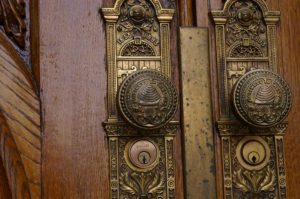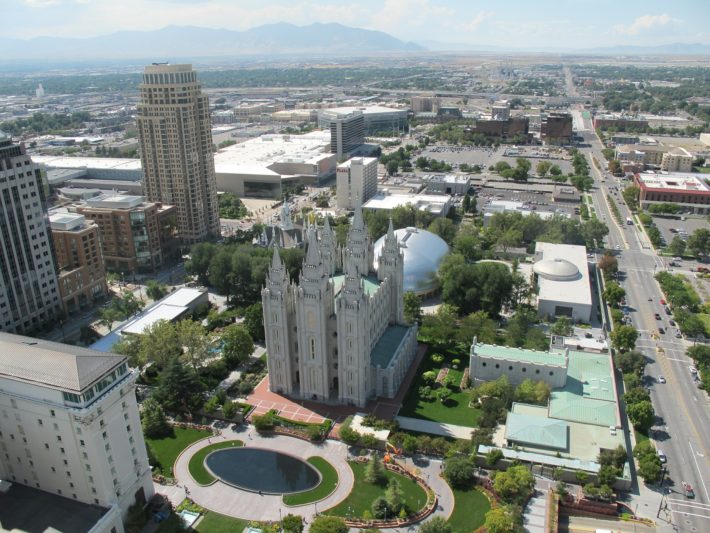Last week, the Church of Jesus Christ of Latter-day Saints changed it name — okay, not really. They’re just not “Mormons” anymore. This isn’t the first time, and it likely won’t be the last. The real question is: why drop the title? And the answer actually makes a lot of sense.
The Original Mormons
The original Mormon Church was organized in April 1830. They were quickly given the nickname “Mormons” due to their added holy book, the Book of Mormon. Joseph Smith Jr., their founder, embraced the term. By his death in 1844, the Mormon church changed its name five or six times, finally settling on “The Church of Jesus Christ of Latter Day Saints.” Never once did they officially brand themselves with the term “Mormon” in their name, but they accepted the title.
After Smith’s death, his church was torn apart. The majority of the Smith family and original members of the Church of Christ followed James Strang to create the oldest Latter Day Saint denomination in 1844 in Michigan, where they still reside today. The former Campbellites followed the last remaining member of Smith’s First Presidency, the highest inner circle in his church, to Pennsylvania. Here they eventually disbanded and joined with other disenfranchised and splintered Mormons form the Reorganized Church of Jesus Christ of Latter Day Saints (RLDS), today known as Community of Christ, the second largest Latter Day Saint denomination.
The majority of the Saints, as they called themselves, were converts introduced to the movement by the twelve apostles. Naturally, they followed the missionaries that converted them. In 1851, they formed the Church of Jesus Christ of Latter-day Saints, changing the name ever so slightly as not to appear to be a part of the Strang movement. Today there are over 100 Latter Day Saint denominations, over 70 of which accept the nickname Mormon.
Back and Forth
In the 70’s, I remember as a child being told we weren’t Mormons. That was a foul name bad people used to mock us. I was told it was a sign of oppression, similar to the “N” word. Saying it was like saying a swear word in our home. There were exceptions, like  the Mormon Tabernacle Choir — but overall, the term carried a stigma and was not to be used, period. Then in the 1980’s, “the Mormons” TV ads came on, and suddenly — maybe — we were, or might be, Mormons.
the Mormon Tabernacle Choir — but overall, the term carried a stigma and was not to be used, period. Then in the 1980’s, “the Mormons” TV ads came on, and suddenly — maybe — we were, or might be, Mormons.
I got very comfortable with the term, as it seemed all of us did. The RLDS church, had quickly abandoned the term to differentiate themselves from their Utah cousins. All of their offshoots rejected the term as well. It was easy now to say we were Mormons — the others were apostates. Then, suddenly in the 1990’s, we weren’t Mormons anymore. The winter Olympic games were coming to Utah, and “the Church” wasn’t going to be Mormon.
From my perspective, this was very confusing, seeing that we’d been Mormons for a decade at this point. But they said it was to put the focus on Jesus, and that made sense. So, yes we were Mormons, but not really. That was just a nickname nonmembers gave us. We wanted to be called Latter-day Saints. Then in the 2000’s, the “And I’m Mormon” campaign came out. At that point, I threw in the towel.
I remember my brother and I talking after his mission. We decided that Mormons were cultural members of the Church, while Latter-day Saints were solid members. You know, temple recommend holders. No, that doesn’t make sense. It was an excuse, becasue at that point, none of it made any sense.
Hidden Sins
That leads us to today. I’m not a member of the Church of Jesus Christ of Latter-day Saints anymore. But, I am still a Latter Day Saint and a Mormon. I always will be. Why did I leave? Before last week, you would know just by looking at the news. After praying for years that the Latter-day Saint church would fully accept the LGBTQ community, or at the very least stop trying to stick their noses into the lives of non-Mormon members of said community, they just got worse. In November 2015, they stated  that any same-sex couples that married were apostates and refused to bless or baptize their children. Those children would need to turn 18 and denounce the people that loved and raised them.
that any same-sex couples that married were apostates and refused to bless or baptize their children. Those children would need to turn 18 and denounce the people that loved and raised them.
This was too much for me. My wife and I decided that if they didn’t want their children, they couldn’t have ours. Yes, there are problems in all religions. None are perfect, but I didn’t want my kids thinking it was right or okay to ostracize anyone. We moved on. And, so did “the Church,” as they prefer to be called. Sex scandals after sex scandals. Women pushing for rights in the organization. Members backlash against bigoted policies. How to make it go away? If they could just stop being Mormons…again.
And it worked. I still have a Mormon news feed set up in my news reader. I generally glance at it, but skip reading it, as it’s just too depressing. I get angry with myself for staying in that denomination for so long now that I plainly see all the evil they endorse. Theirs is the rich corporate arm of the movement — they use their money and influence very little to actually help — just enough to make sure they’ve got some good PR out of it. But now they’re so big they can no longer hide their sins.
Yet, they have hidden their sins, for now anyway. Every article for the past week has been about the name change. Homosexual oppression is out; “we’re not Mormon anymore” is in. Sex scandals are out; “we’re not Mormon anymore” is in. Women want equality, ordination, etc.? That’s out; “we’re not Mormon anymore” is in.
Well played, Latter-day Saint Mormons. You managed to do something even the far richer and more powerful Catholic church could not do: temporally hide your sins. I personally hope you keep this up and don’t backslide to being Mormons again. I really prefer being a Mormon without explaining I’m not a Latter-day Saint. It’s far easier than explaining I’m a Latter Day Saint, but not a Latter-day Saint.

